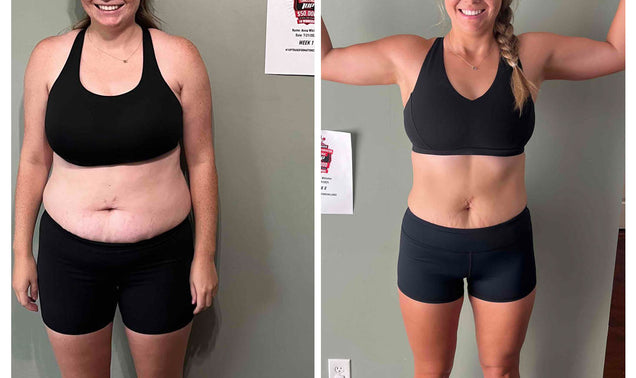Fat loss is a confusing and frustrating subject for many individuals. Most of the time this is due to the fact that there is so much conflicting information on how to easily and effectively lose unwanted body fat.
On one side, you have people saying that you need to adopt some “magic” diet that will hack your physiology and make the fat melt off your frame. (Note: these “magic” diets usually entail extreme calorie restriction and the elimination of entire food groups).
On the other hand, you have the individuals trying to fool you into some gimmicky exercise program that gives you 6-pack abs in just 10 mins a day.
The reality is that neither of these extreme approaches lead to long-lasting weight loss. They will lead to frustration, anger, and feelings of deprivation.
That’s where this article comes into play.
We’re going to tell you how to easily boost your energy output each day without making you exercise for hours on end or even follow some absurdly restrictive eating plan.
Let’s get started by first discussing how your body burns energy.
Calorie Burning 101
As we’ve covered before in our explainer on TDEE, your body burns calories through four primary mechanisms:
Basal Metabolic Rate (BMR)
Basal Metabolic rate (BMR) is the largest component of your TDEE. It is the number of calories your body burns during the day if all you did was lay down the whole day.
BMR depends on a number of factors including age, sex, height, weight, and the amount of muscle mass you have.
Thermic Effect of Feeding (TEF)
The thermic effect of feeding is the number of calories your body uses to digest the food you eat (carbohydrates, protein, and fat) and break them down into simple sugar, fatty acids, and amino acids to create energy, replenish muscle glycogen, repair muscle tissue, synthesize hormones, and fortify immune function.
Depending on the composition of your diet (the ratio of carbs to protein to fat you eat), will determine how many calories your body expends digesting your meals.
Protein is the most energy-intensive macronutrient to digest followed by carbohydrate which is the followed by dietary fat.
Truth be told, the thermic effect of feeding only accounts for ~10% of total daily energy expenditure.
Exercise Activity Thermogenesis (EAT)
The Thermic Effect of Activity describes the number of calories expended during structured physical activity (i.e. exercise).
This number can vary quite considerably from one day to another and from one individual to another individual depending on the type of workout performed, its duration, and its intensity. An individual’s body weight also factors into how many calories are burned during exercise since a larger individual has to move more mass than a lighter one.
Non-Exercise Activity Thermogenesis (NEAT)
The final component of an individual’s TDEE is non-exercise activity thermogenesis (NEAT).
NEAT accounts for the number of calories burned from movement not classified as exercise. This includes activities such as walking from one room to another, fidgeting, blinking, tapping your toes, snapping your fingers, and taking the stairs.
While many of you may scoff at the impact NEAT can have on your daily energy expenditure, research indicates that it can account for up to 2,000 calories per day![1]
Now, realize this huge calorie burn applies to those individuals who are highly active during the day (construction workers, teachers, waitresses, etc.). Desk jockeys don’t have nearly as high of NEAT (on average).
But, here is where you can easily burn more calories each day without feeling like you are adding even more exercise to your day or infringing on your body’s ability to recover from intense training sessions.
Balancing Exercise & NEAT
When it comes to exercise (especially in regards to weight loss), a common trap is to think that more exercise, and more intensity is better.
And, on the surface, this makes sense -- exercise burns calories, more intense exercise burns more calories than less intense exercise, and longer exercise bouts burn more calories than shorter exercise bouts.
So, ipso facto, longer, harder workouts turn your into a calorie-incinerating machine...right?
Not necessarily so.
You see, the body has some compensatory mechanisms.
Doing too much high intensity, long duration exercise (while significantly ramping up your exercise activity thermogenesis) will actually lead to reductions in your NEAT.[2]
Basically, if you do an all-out high intensity workout where you redline your body and burn 500 calories, you may exhaust yourself to the point that you basically do nothing the rest of the day except lounge on the sofa or bed watching TV. As a result, your NEAT significantly decreases.
So, where does this leave us?
Should we not do extreme workouts?
No, not at all.
As we’ve said many times before (especially in regards to dieting) -- everything in moderation.
You can still train hard without completely frying yourself.
But the focus of those “hard” training sessions should be directed towards resistance training or very short bouts of HIIT.
The rest of your training should be focused on low intensity work like walking, which both increases circulation and promotes recovery without impairing your body’s ability to repair damage done from resistance training.
You see, the body does not like being overly stressed. Both exercise and low-energy diets are very strong stressors to the body.
What this means is that taking either one (diet or exercise) to the extreme will lead to unintended consequences in other areas of your life (like downregulation of NEAT).
How to Burn More Calories with NEAT
The goal of boosting NEAT isn’t to give yourself more mini-workouts each day where you’re doing bouts of push ups and lunges every time a commercial comes on TV. That’s structured exercise, not NEAT.
Instead, focus on how much total movement you’re doing each day.
An easy way to do this is to wear a fitness tracker or pedometer and track your steps. A great goal to aim for each day is 10,000 steps, which is very doable, even by very busy individuals.
Another great way to keep tabs on your daily movement habits is to track your activity level in 30-60 minute intervals and see how much time you spend sitting, standing or moving.
When you have a log of your activity, you can see where you might be able to implement more movement.
For instance, instead of sitting down while talking on the phone, take a walk or pace back and forth across the room while chatting.
Even going for as little as a 5-minute walk every 60 minutes can help you burn up to an extra 660 calories per week.[3]
Remember, weight loss is a global process, one that involves multiple tools (diet, exercise, and non-exercise activity) and should be viewed over the course of weeks, not hour-by-hour or day-by-day.
Little changes each day (i.e. doing more 5-minute walks, standing more, etc.) translate to big calorie expenditures overtime which helps you lose weight more effortlessly and hopefully ends the cycle of on-again, off-again dieting once and for all!
References
- The “NEAT Defect” in Human Obesity: The Role of Nonexercise Activity Thermogenesis. Mayo Clinic.https://www.mayoclinic.org/documents/mc5810-0307-pdf/doc-20079082
- Di Blasio A, Ripari P, Bucci I, et al. Walking training in postmenopause: effects on both spontaneous physical activity and training-induced body adaptations. Menopause. 2012;19(1):23‐32. doi:10.1097/gme.0b013e318223e6b3
- Swartz, A.M., Squires, L. & Strath, S.J. Energy expenditure of interruptions to sedentary behavior. Int J Behav Nutr Phys Act 8, 69 (2011). https://doi.org/10.1186/1479-5868-8-69






